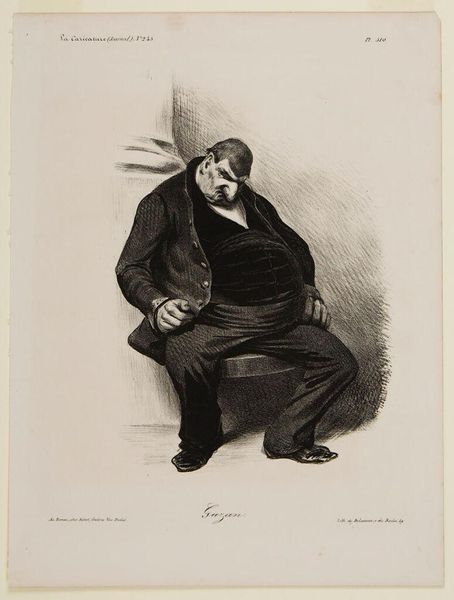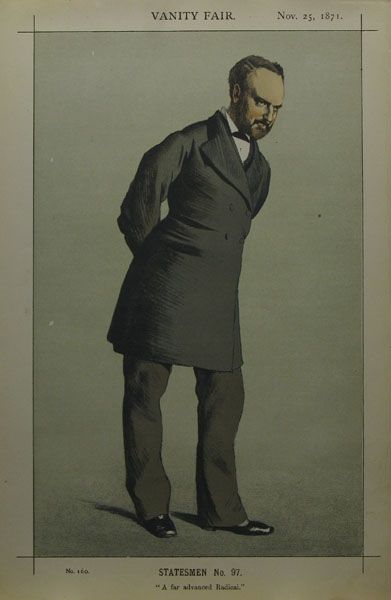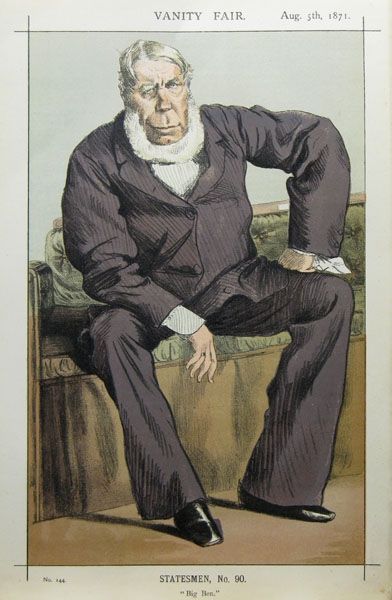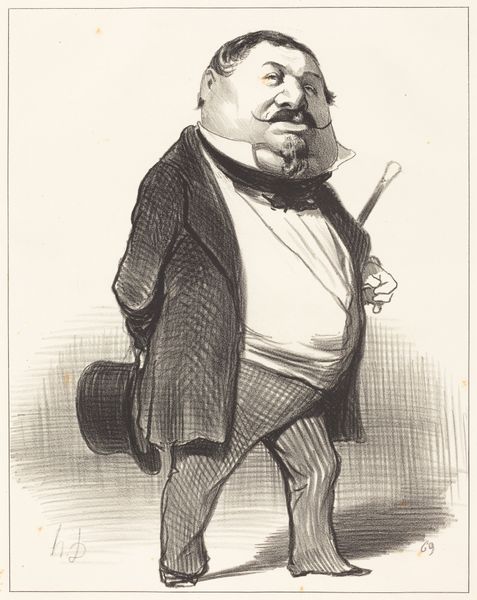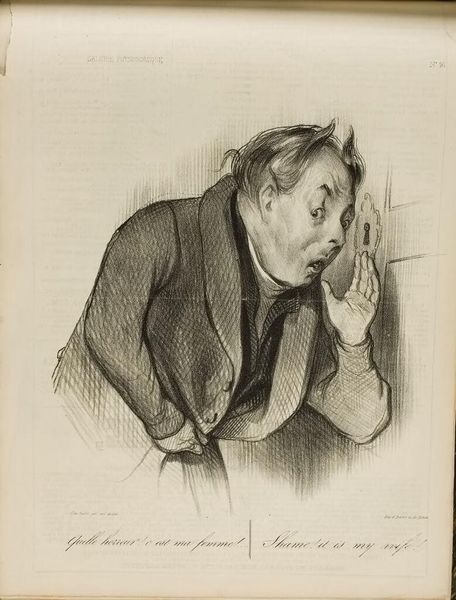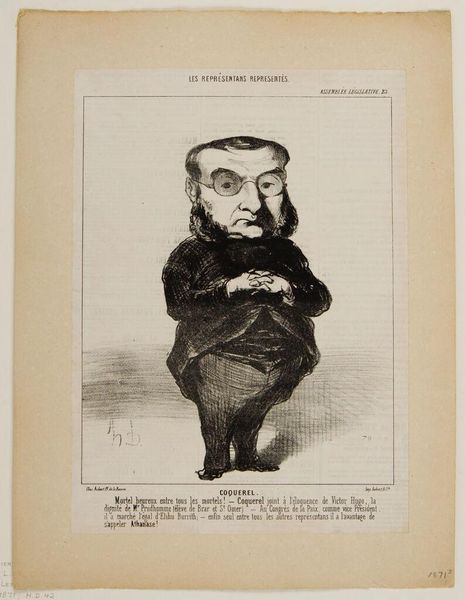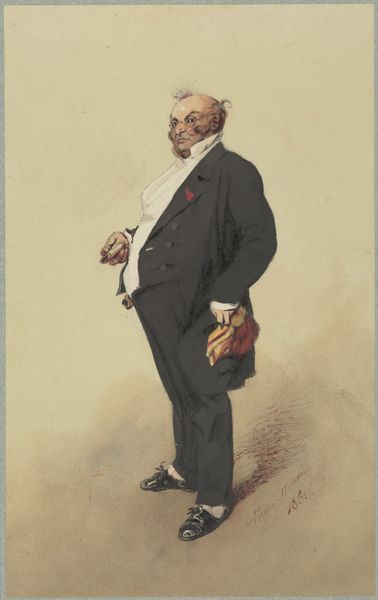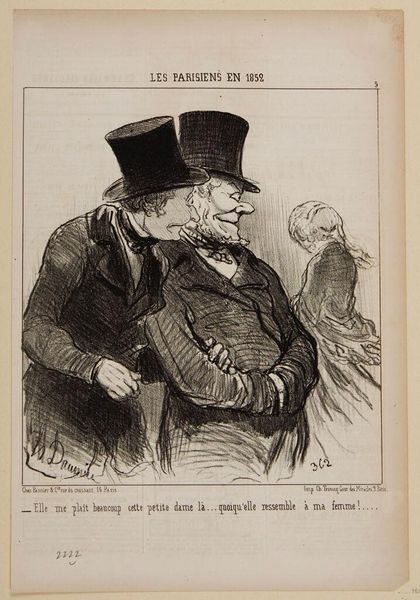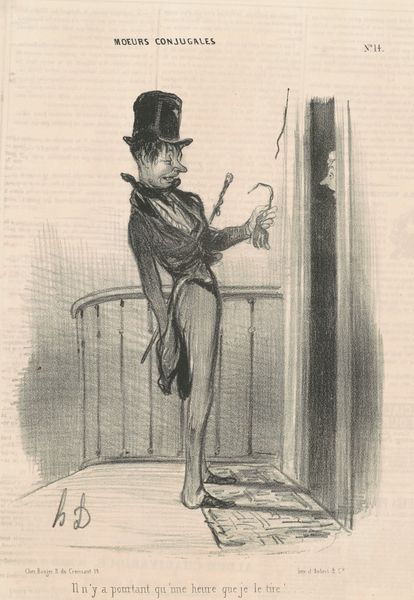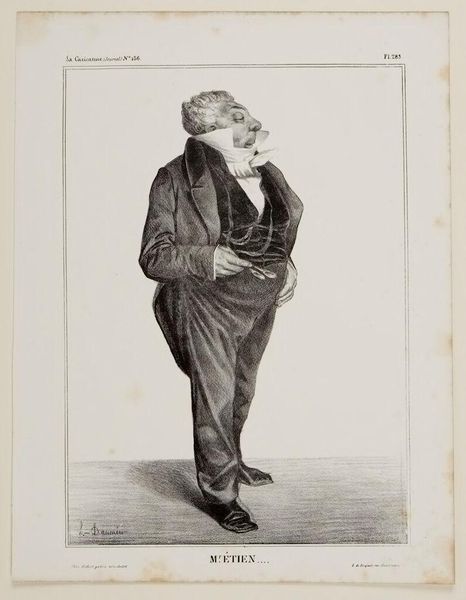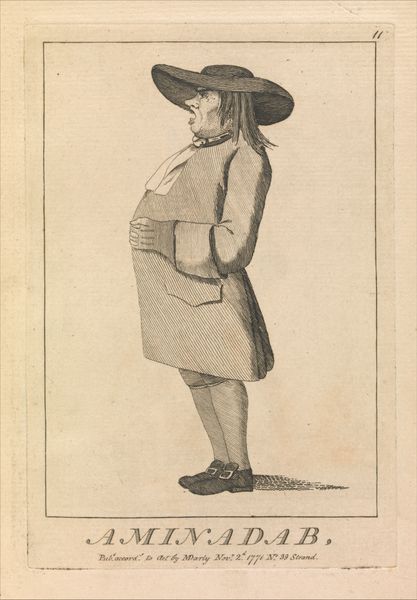
lithograph, print
#
portrait
#
lithograph
# print
#
caricature
#
genre-painting
Copyright: Public domain
James Tissot’s caricature of William Henry Gregory, published in Vanity Fair in 1871, presents the statesman as an archetype of Victorian authority and affluence. The symbols here— the top hat, the corpulent figure, the tailored coat — speak to the established order of the 19th century, where appearances reinforced social hierarchy. Yet, beneath this veneer of respectability, we find a visual language that echoes across centuries. Observe the subtle hand gestures and the confident stance; these are not unique to Gregory. We see echoes of Roman senators in their oratory poses, Renaissance merchants displaying their wealth, all expressing power and control. Consider the recurring motif of the 'ruling' hand, a gesture seen in countless portraits across history, each time slightly altered, yet invariably conveying dominance. This gesture's persistence through time reveals our collective, subconscious fascination with authority and order. In Tissot’s caricature, the emotional tension is palpable. The exaggerated features, and unflattering pose, subvert Gregory’s expected dignity. Thus, we see how symbols persist through time, their meanings shifting and evolving, reflecting the ever-changing currents of human culture.
Comments
No comments
Be the first to comment and join the conversation on the ultimate creative platform.
